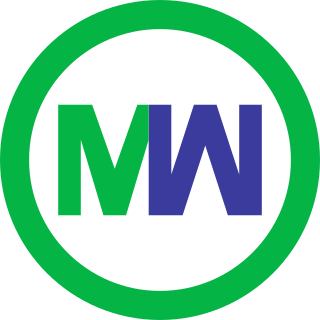Top Qs
Timeline
Chat
Perspective
MetroWest Regional Transit Authority
Bus and paratransit service in Massachusetts From Wikipedia, the free encyclopedia
Remove ads
The MetroWest Regional Transit Authority (MWRTA) is a regional public transit authority in the state of Massachusetts providing bus and paratransit service to sixteen municipalities in the Boston MetroWest. The MWRTA was formed in 2006 and began service on July 1, 2007, with the purpose of filling a void in public transportation service in the MetroWest. Funding for the MWRTA comes partially from the state and local governments of the communities it operates within.[2]
Remove ads
Service
Summarize
Perspective



Routes
As of 2025[update], the MWRTA operates 16 fixed routes that provide all-day service. Most operate seven days a week; routes 6, 10, 15, and the MassBay shuttles do not operate on weekends.[3]
- Route 1: Route 9 from the Natick Mall to Woodland MBTA Station
- Route 2: Clockwise Framingham Route
- Route 3: Counter Clockwise Framingham Route
- Route 4N: North Framingham Route
- Route 4S: South Framingham Route
- Route 5: Hopkinton Route
- Route 6: Holliston to Milford Route
- Route 7: Framingham to Marlborough Route
- Route 7C: Marlborough Connector Route
- Route 9: Route 9 from the Natick Mall to Staples Corporate Offices
- Route 10: Natick Counter Clockwise Route
- Route 11: Natick Clockwise Route
- Route 14: Milford Route
- Route 15: Hudson Route
- MBC Shuttle
- MassBay Riverside
As of 2025[update], the MWRTA operates 3 commuter shuttles that run Monday–Friday at peak hours, plus two hospital shuttles with limited Tuesday–Thursday service.[4]
- 495 Connector
- Mathworks Natick Shuttle
- MathWorks Framingham Shuttle
- Framingham Natick Wellesley Boston Hospital Shuttle
- Sudbury Wayland Boston Hospital Shuttle
Paratransit
Per ADA requirements, the MWRTA provides paratransit service, which is branded as MetroWest Ride.[5]
Microtransit
The MWRTA operates a microtransit service branded as Catch Connect. As of 2025[update], it is available in Wellesley, Sudbury, Hudson, Berlin, Framingham, Natick, Milford, and Hopedale, plus several destinations in other municipalities.[6]
Remove ads
History
Summarize
Perspective
In 2006, an Economic Stimulus Bill passed in the Commonwealth of Massachusetts included legislation pushed by Karen Spilka and other MetroWest area legislators.[7] The legislation opened the possibility of a new Regional Transit Authority to be formed in the MetroWest region. The legislation states that any community providing an annual assessment to the Massachusetts Bay Transportation Authority (MBTA) but not served directly by the MBTA may form their own Regional Transit Authority (RTA) using that funding instead.[8]
Under the advisement of the legislation, the MWRTA was created in Framingham with the neighboring communities of Holliston, Hopkinton, Natick, Ashland, and Wayland. At the time, Framingham had its own community bus system called The LIFT (Local Inter Framingham Transit).The newly formed MWRTA was based on The LIFT. With this system, the communities of the MWRTA would have a basis for their new RTA.[9]
As part of the growth of the MWRTA and due to Natick joining the system, Natick's own Neighborhood Bus system was incorporated into the MWRTA in the summer of 2008.[10] Prior to the creation of the MWRTA, the Massachusetts Bay Transportation Authority (MBTA) provided part of its paratransit service, called The Ride to Framingham and Natick. On July 1, 2009, administration of paratransit service to Framingham and Natick switched from the MBTA to MWRTA in alignment with the change in assessments paid to the MWRTA by those communities rather than to the MBTA.[5]
MWRTA began microtransit service branded as Catch Connect in Wellesley in February 2021. It replaced fixed route 8 the next month. The service was expanded to Framingham and Natick on weekends beginning in July 2021. Saturday-only Catch Connect service in Hudson and part of Marlborough began in June 2022; it was expanded to weekdays in June 2023.[11][12]
The MWRTA acquired larger 29-foot (8.8 m) transit buses in 2025 for use on route 4N, the system's busiest route.[13][14]
Remove ads
References
External links
Wikiwand - on
Seamless Wikipedia browsing. On steroids.
Remove ads


